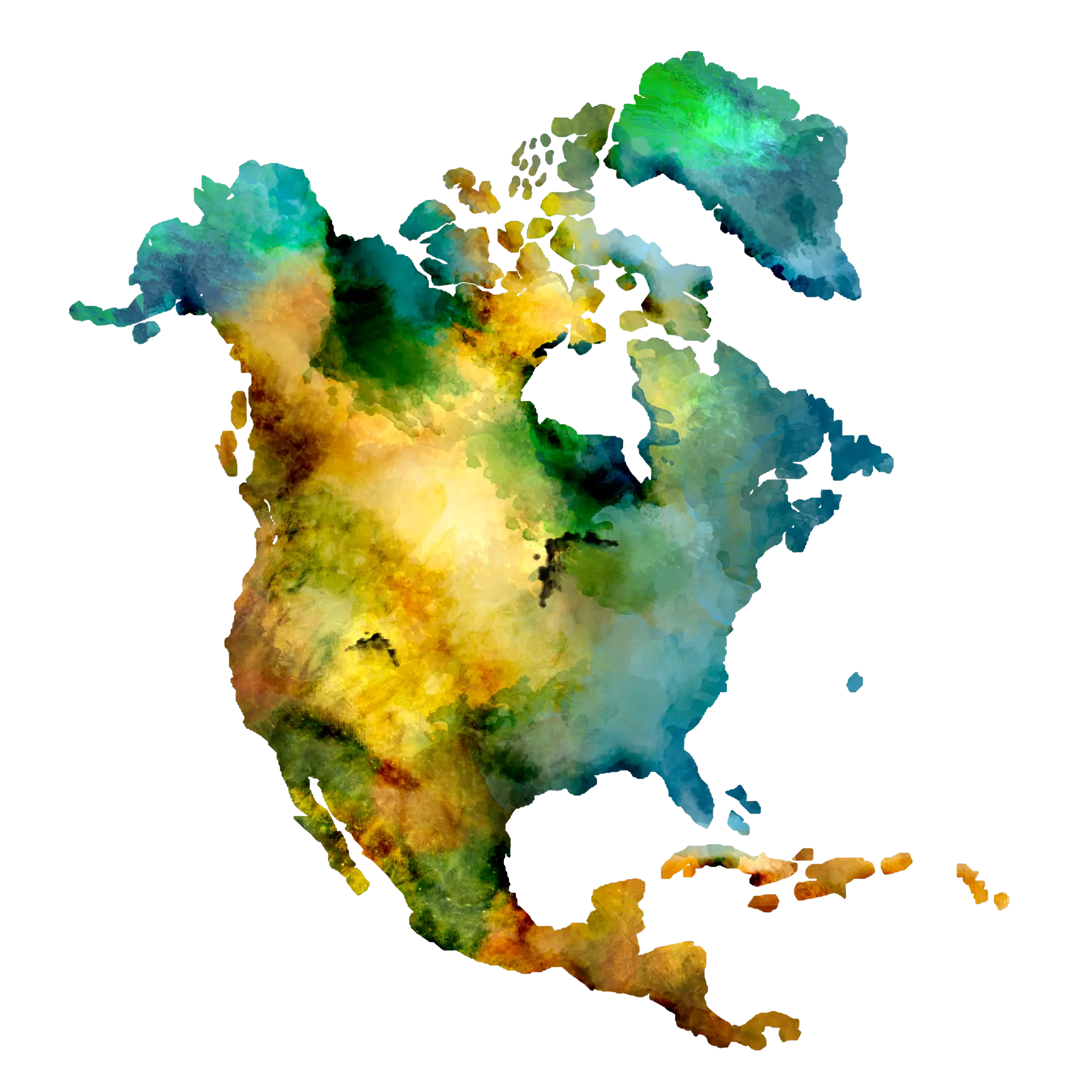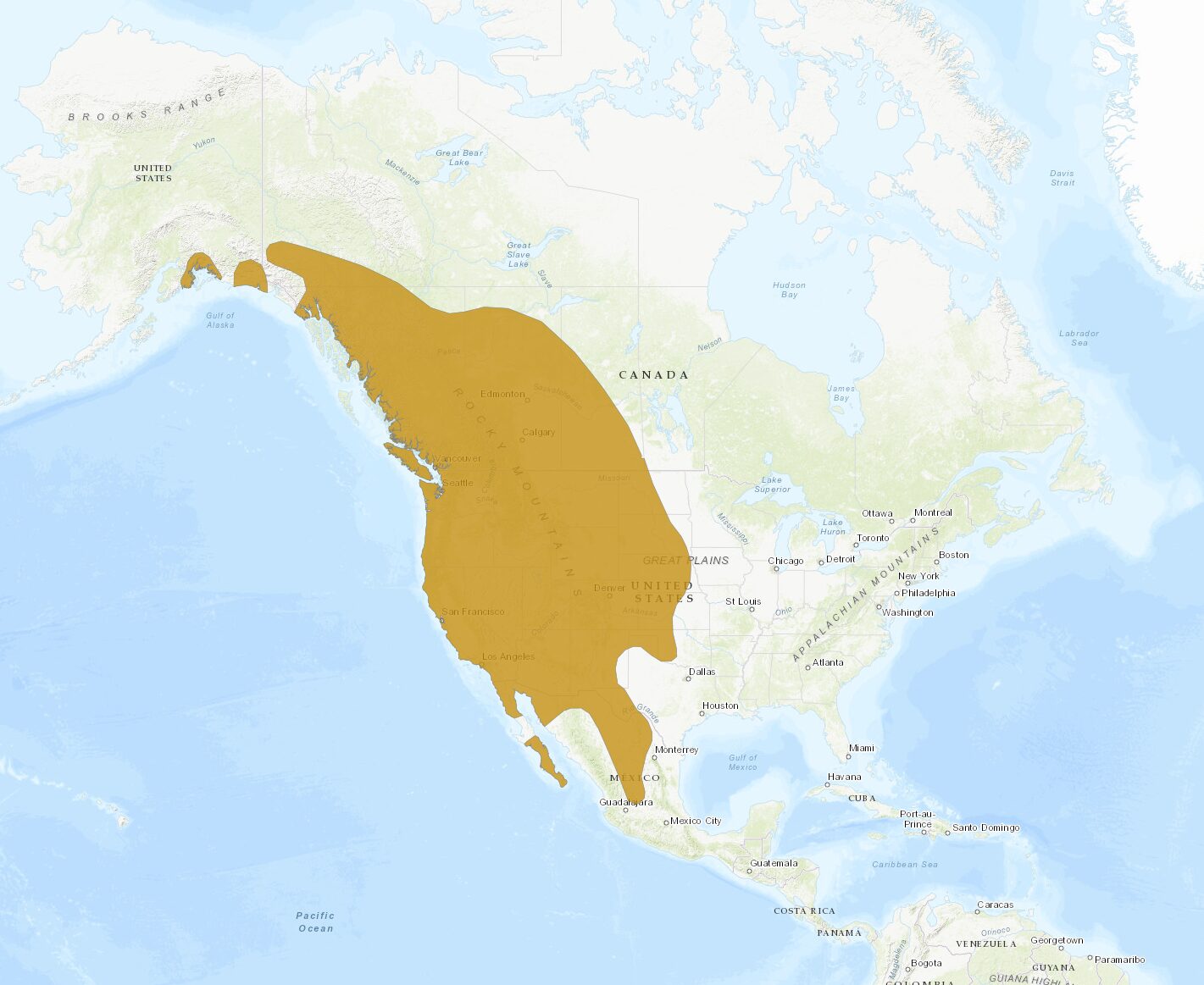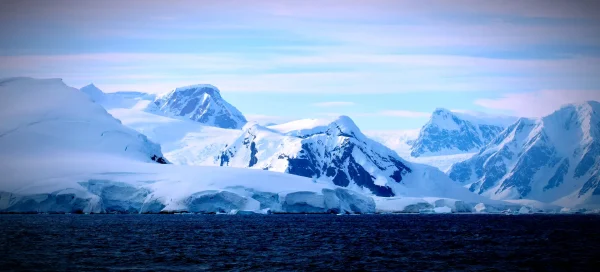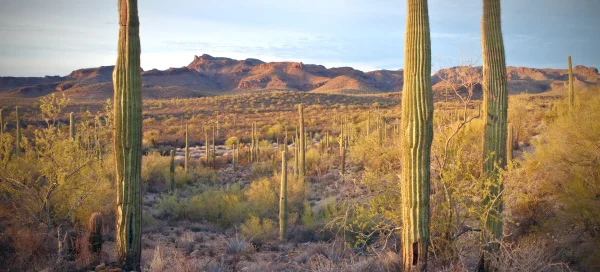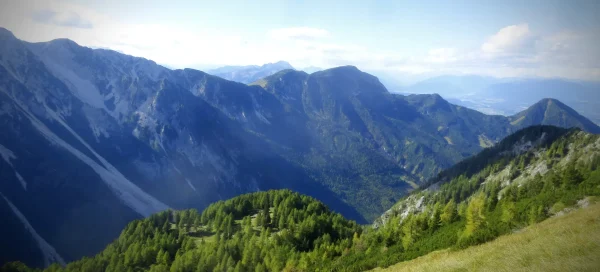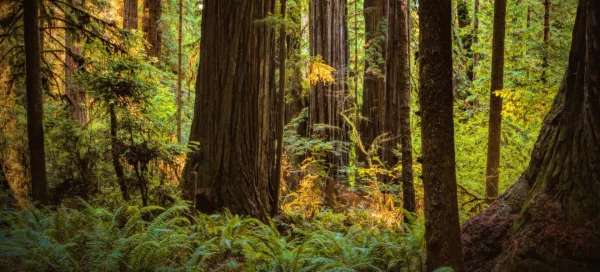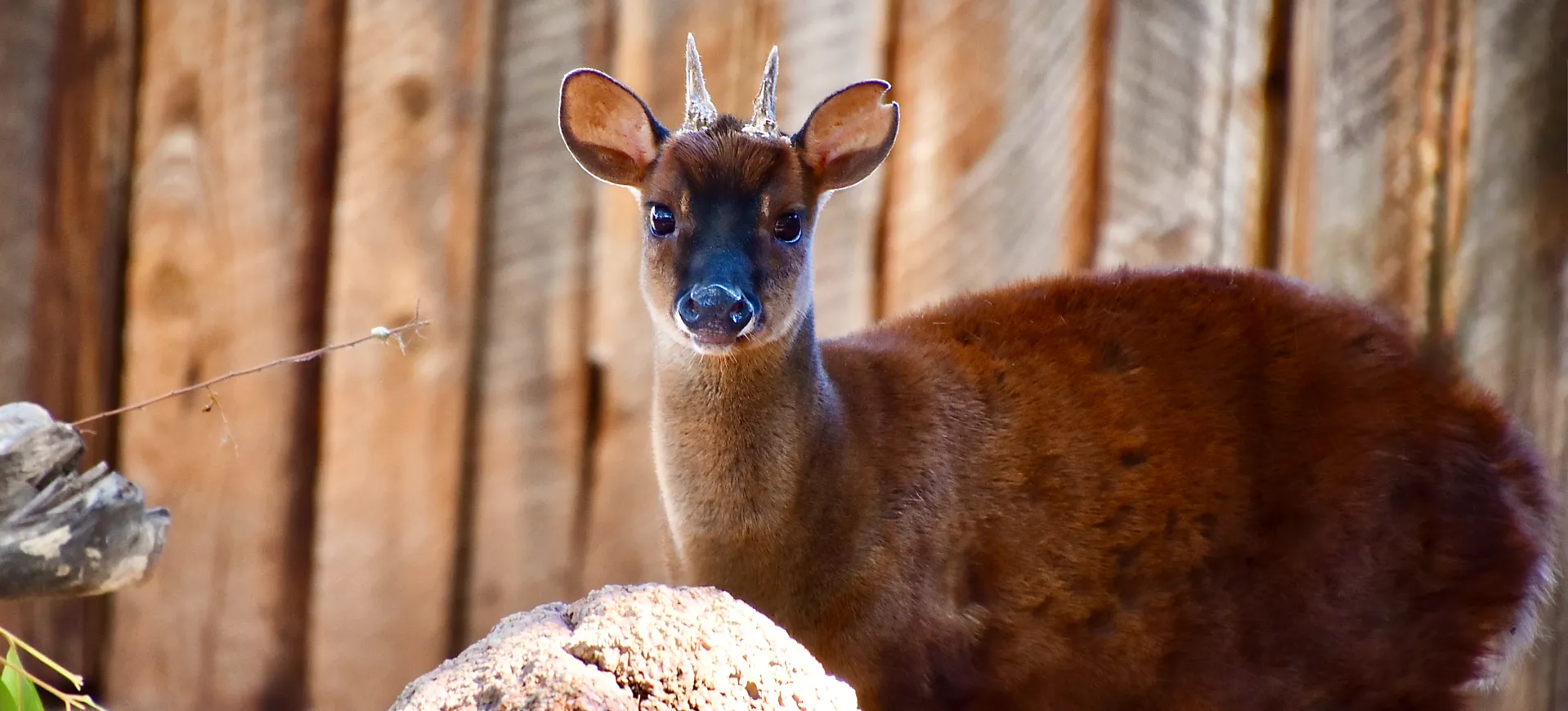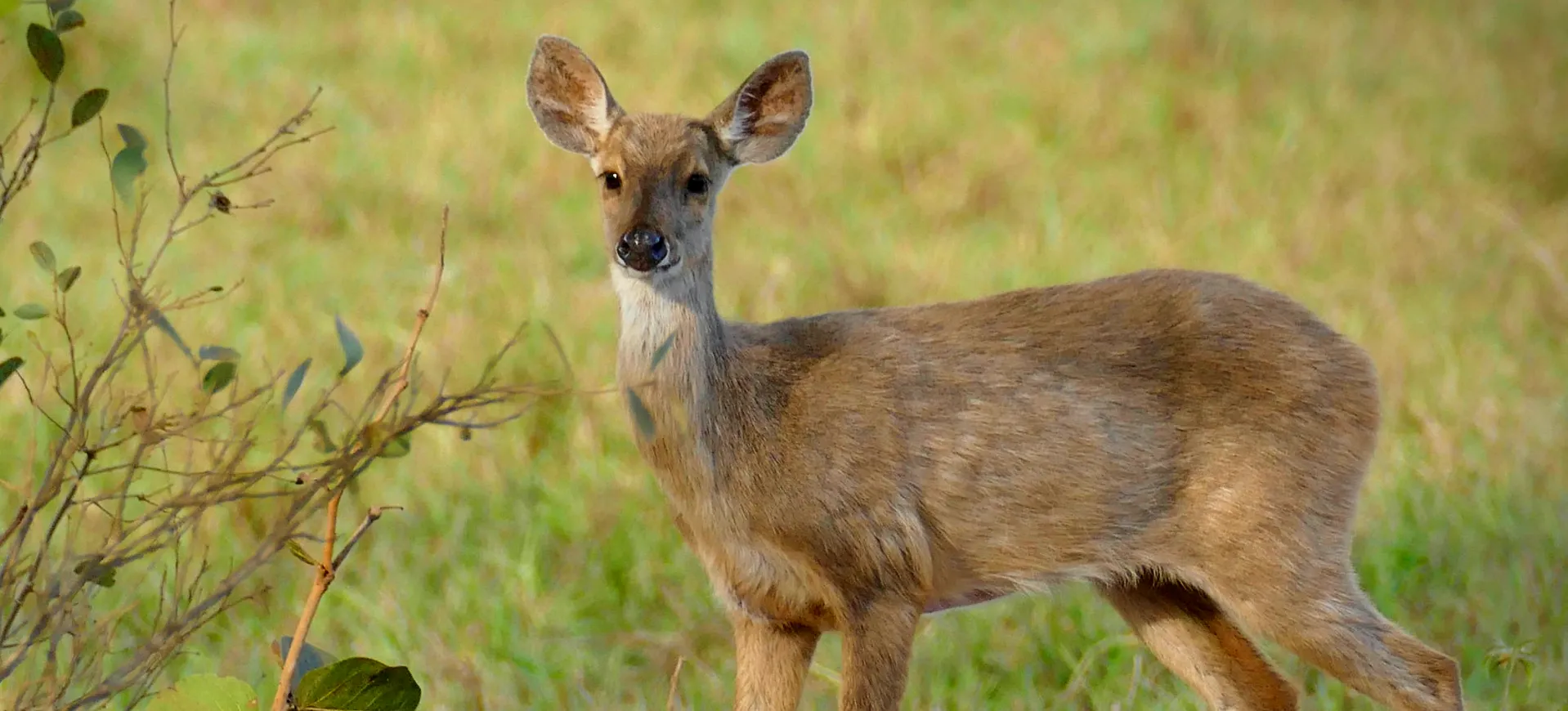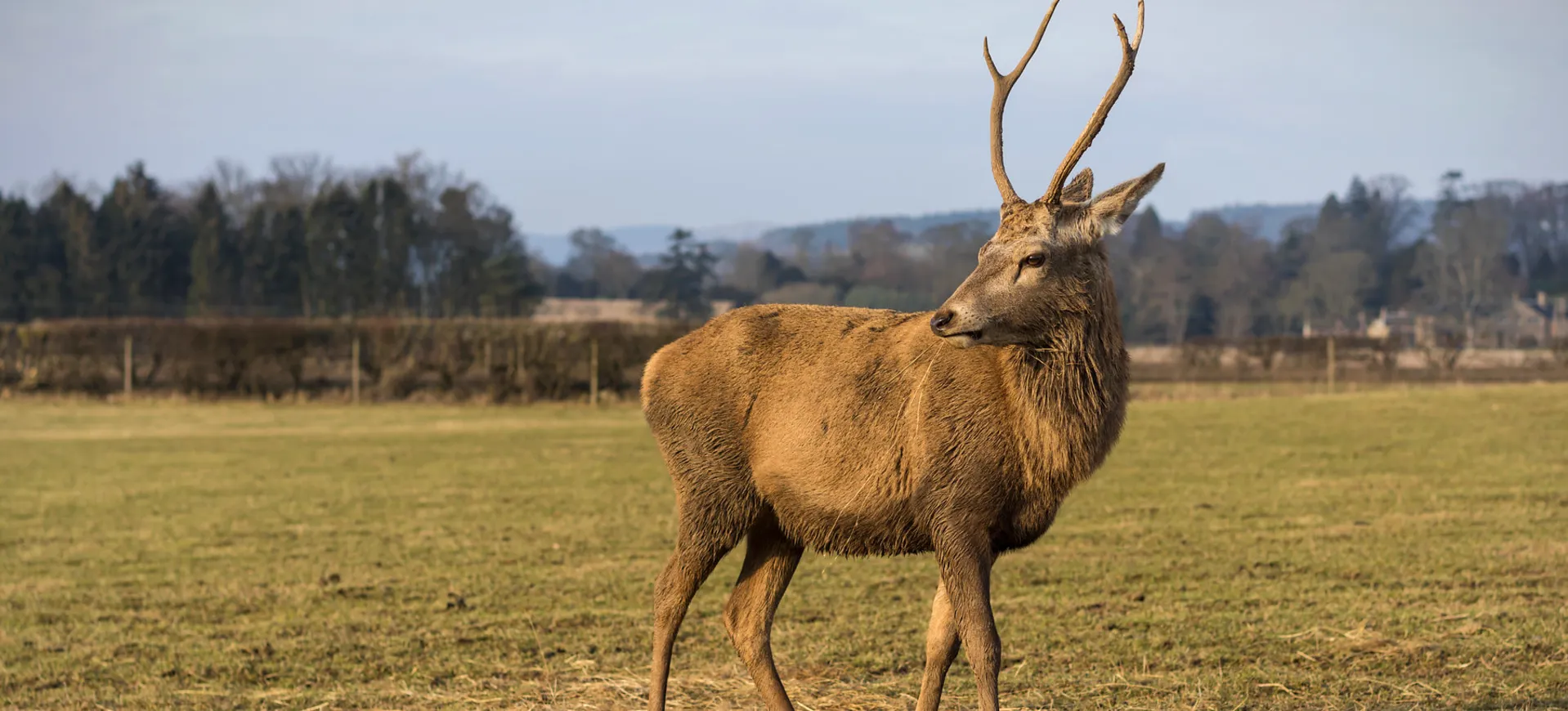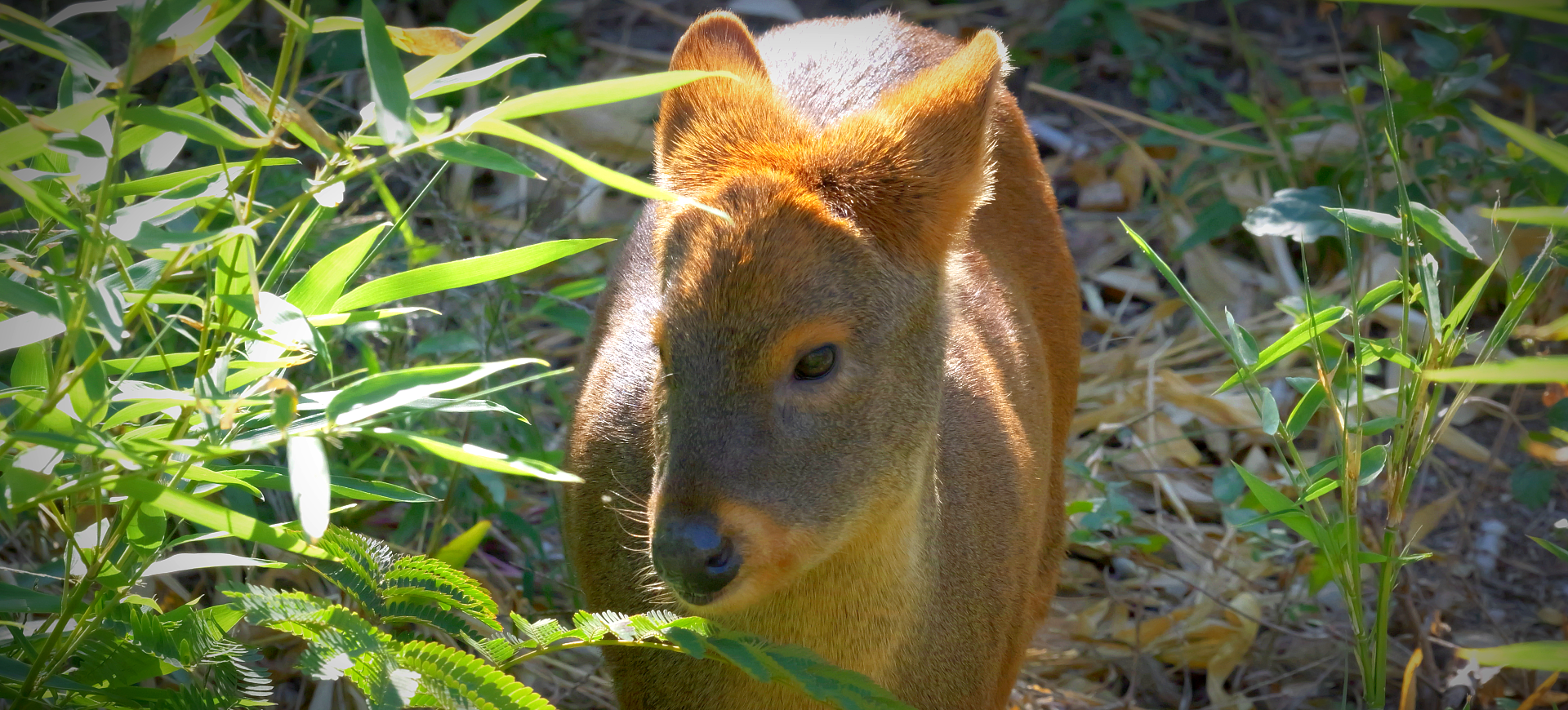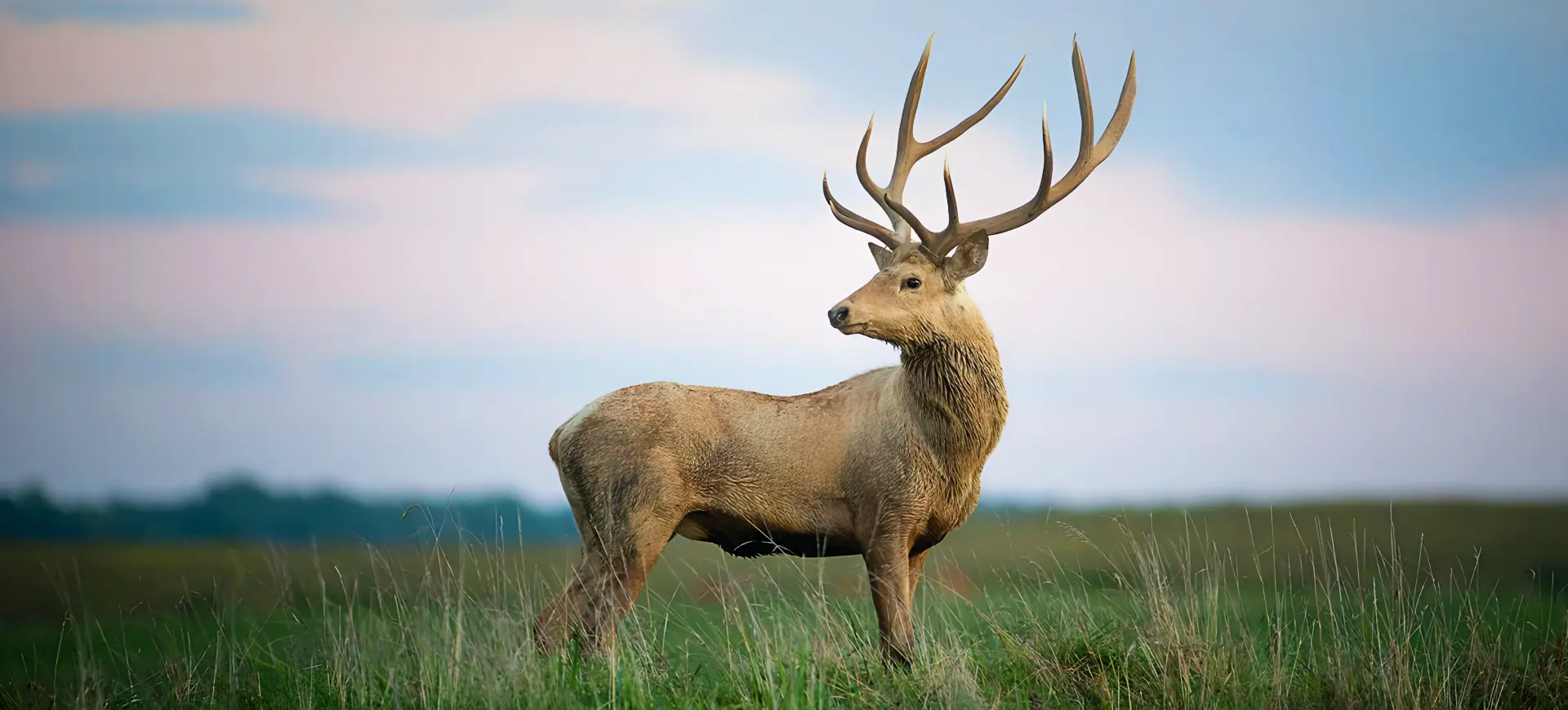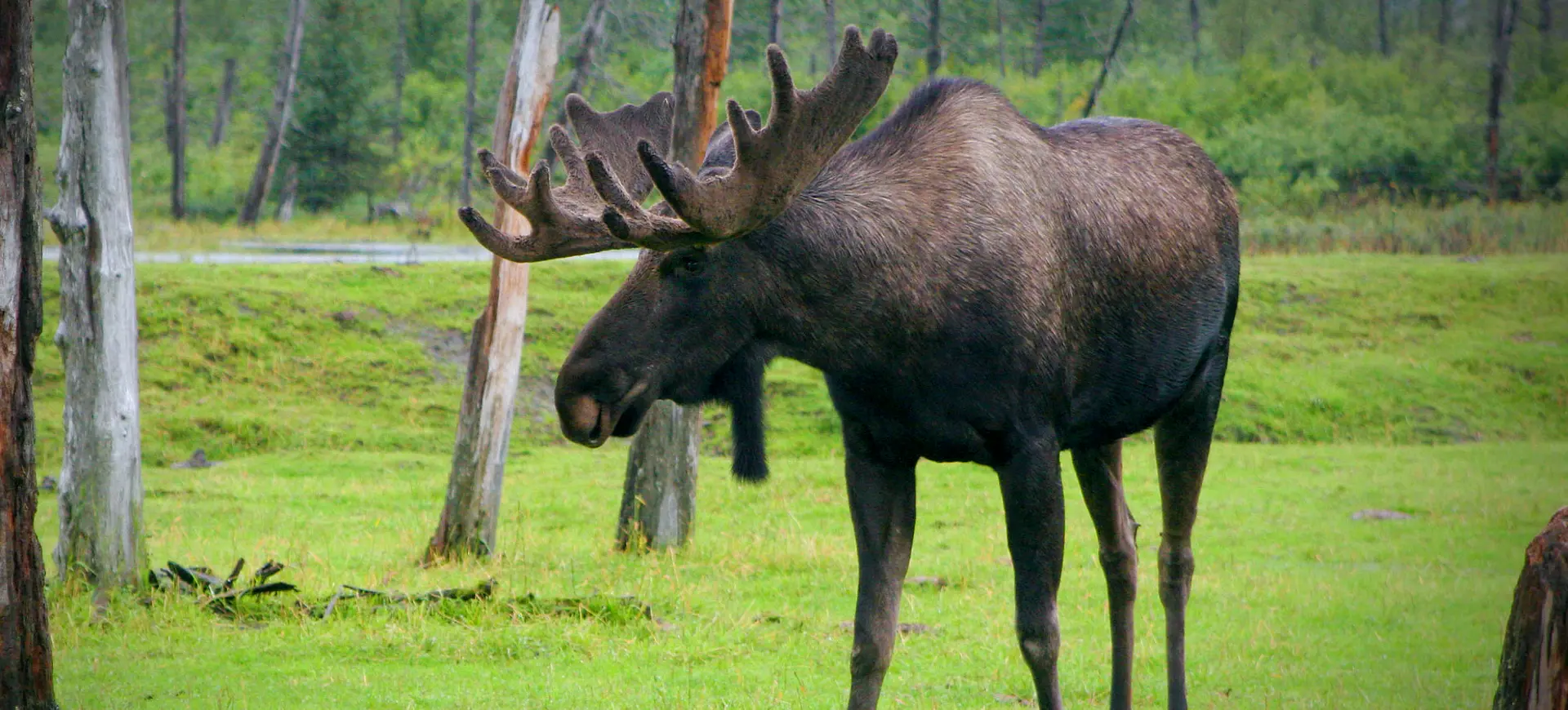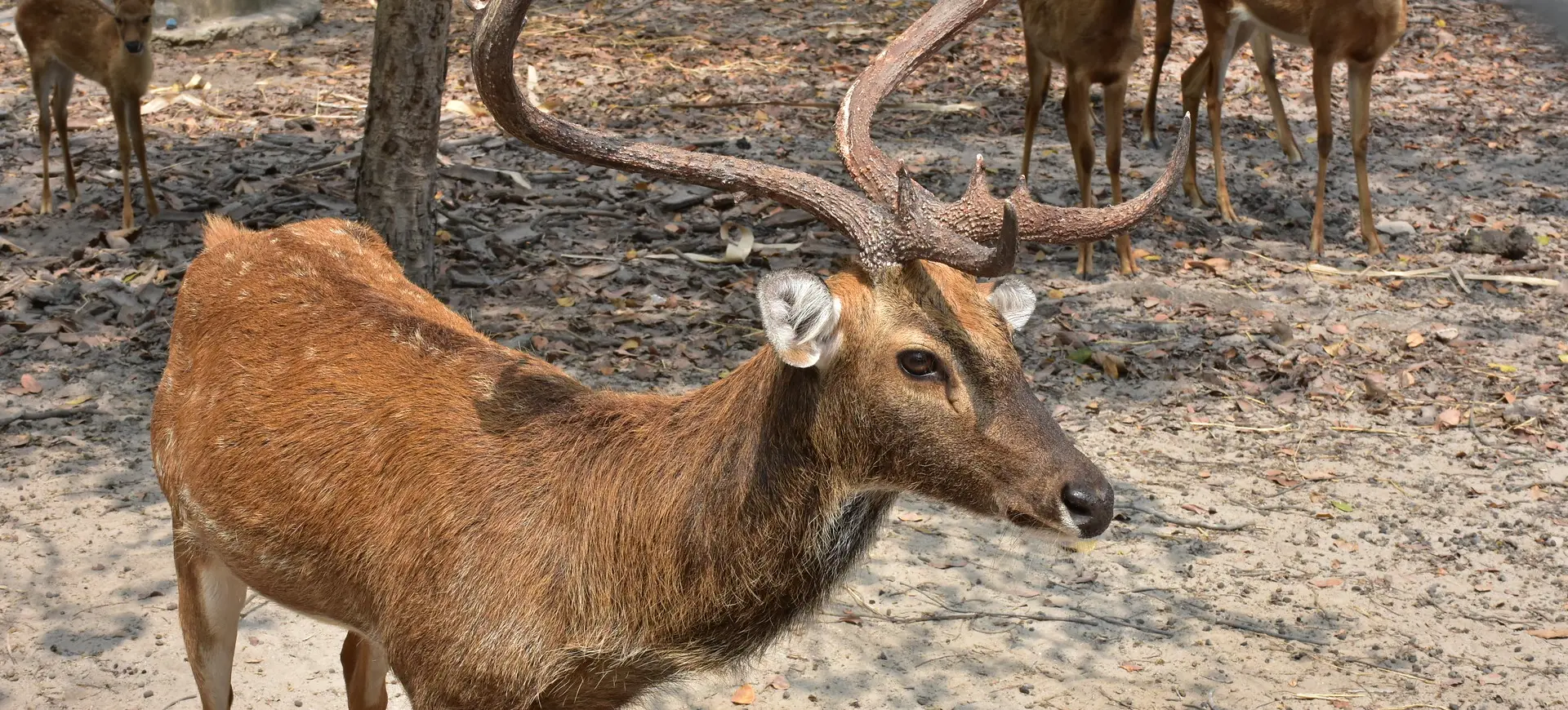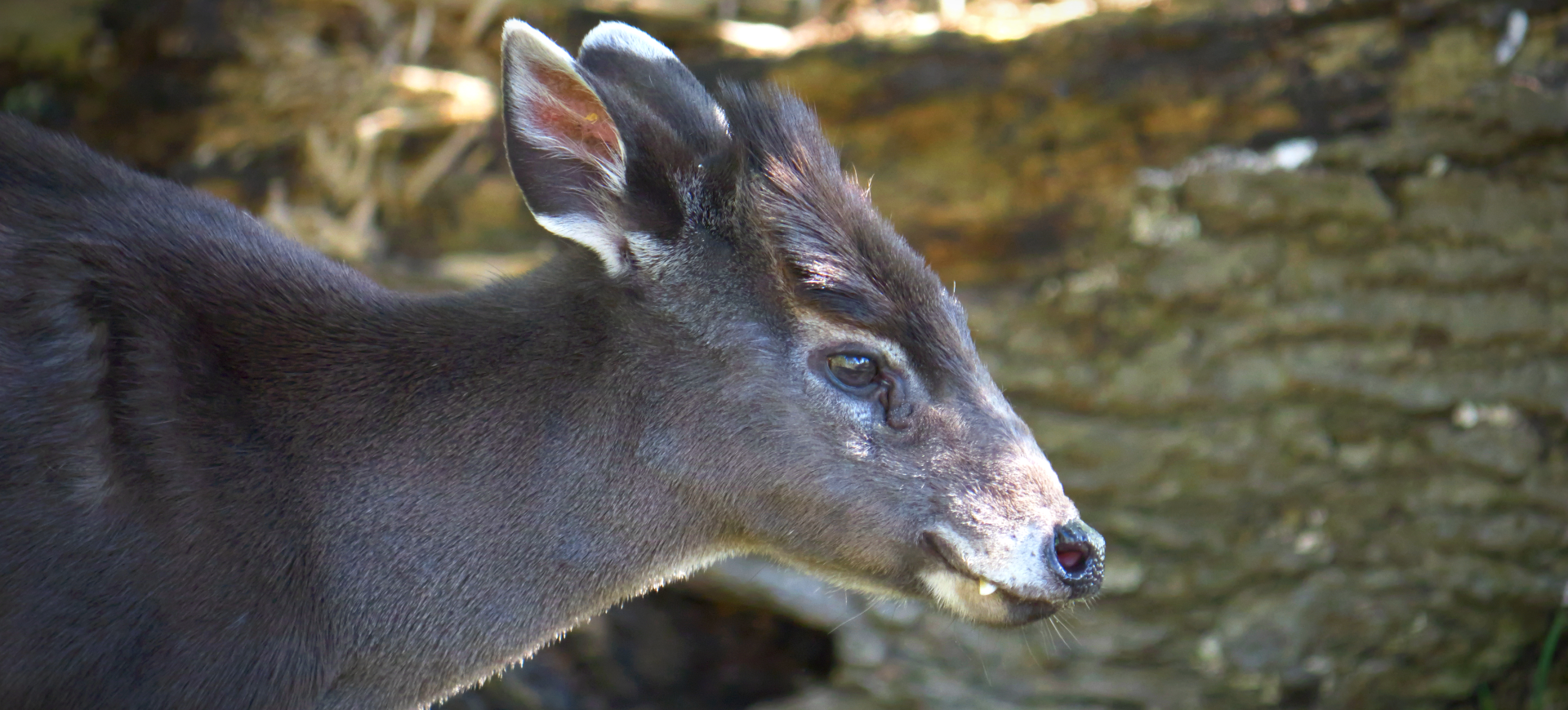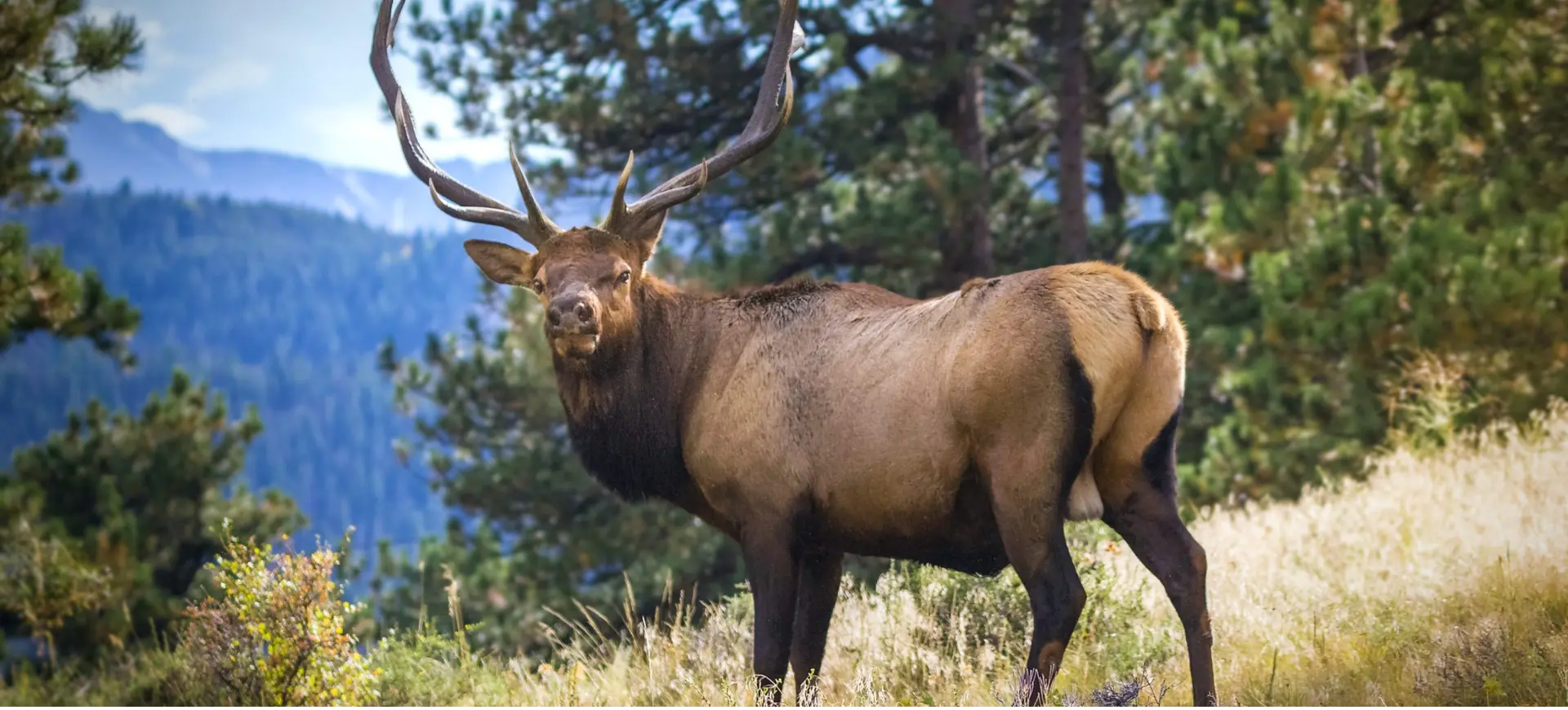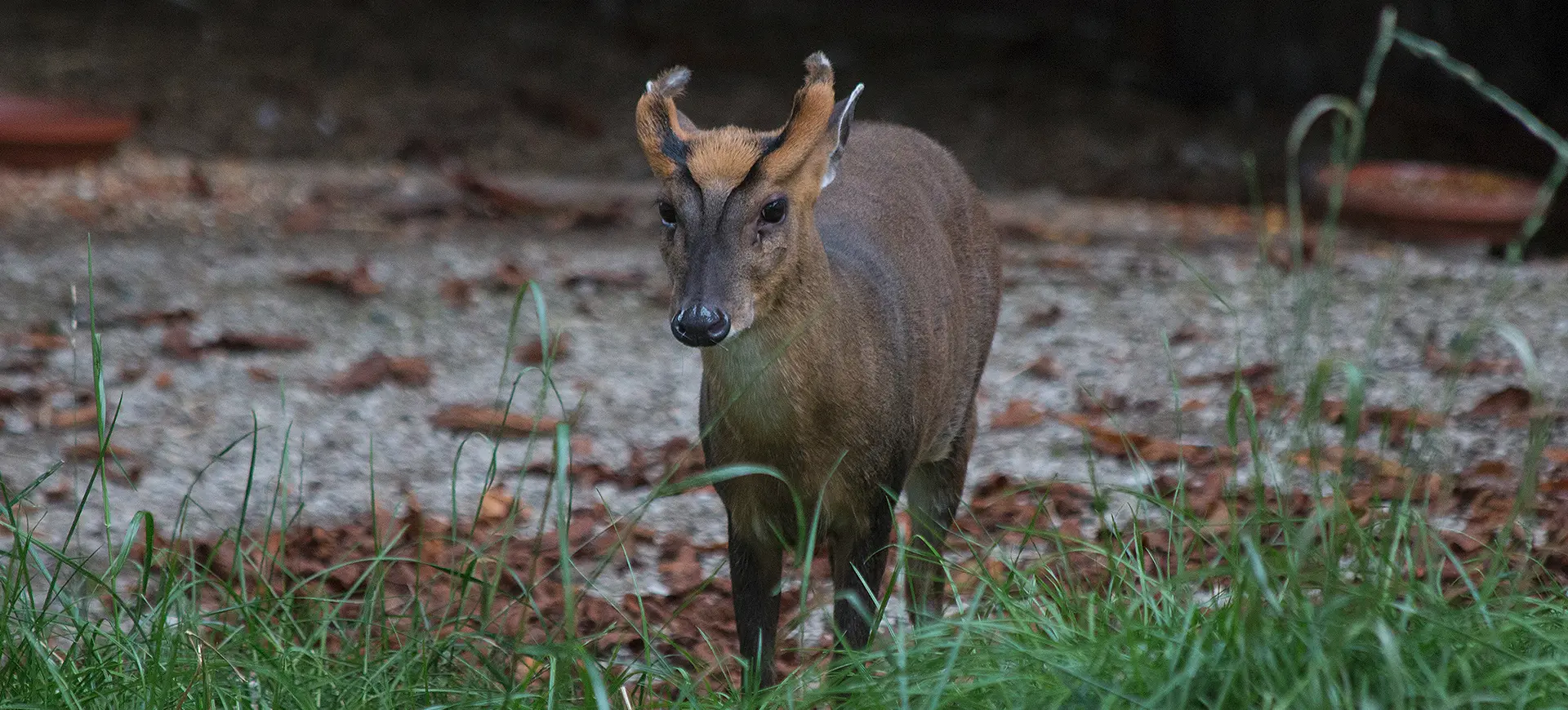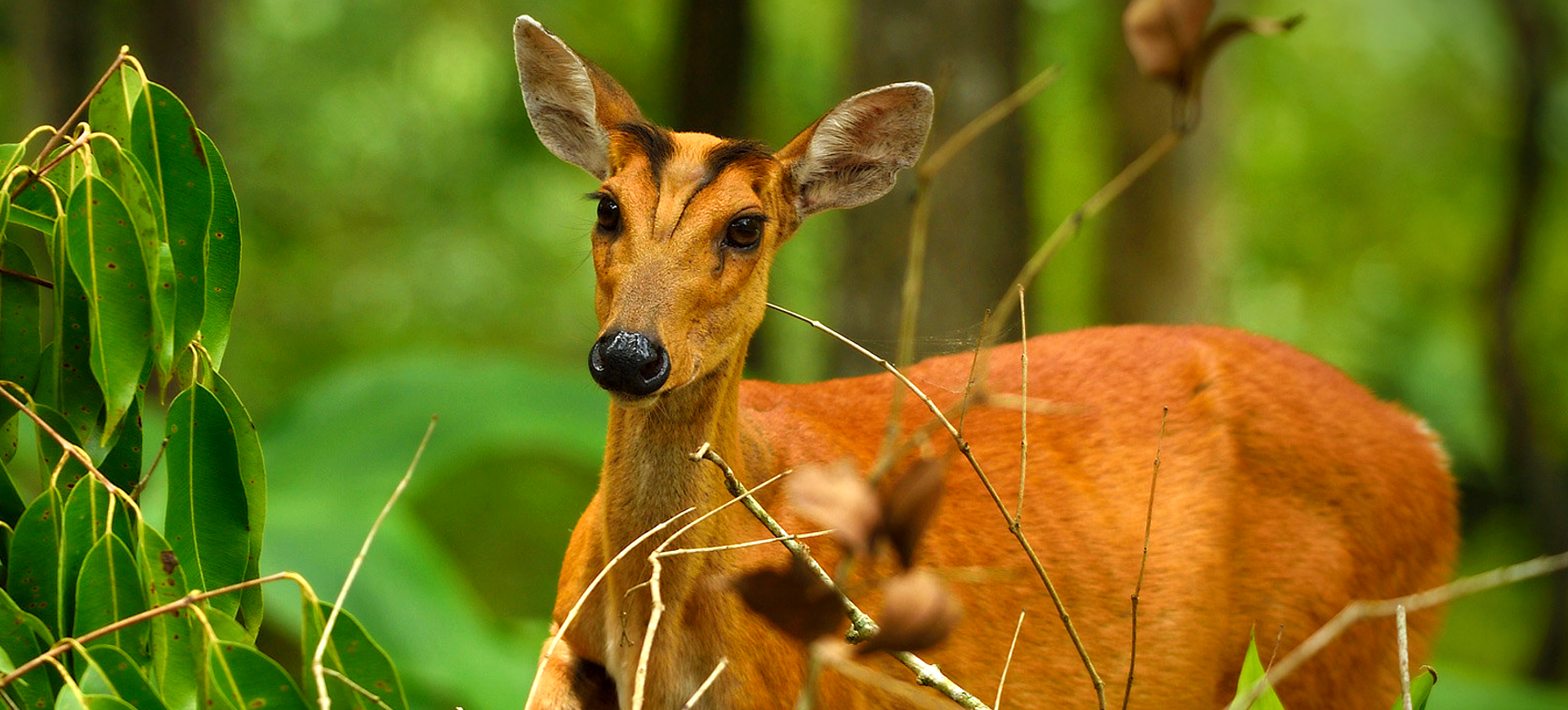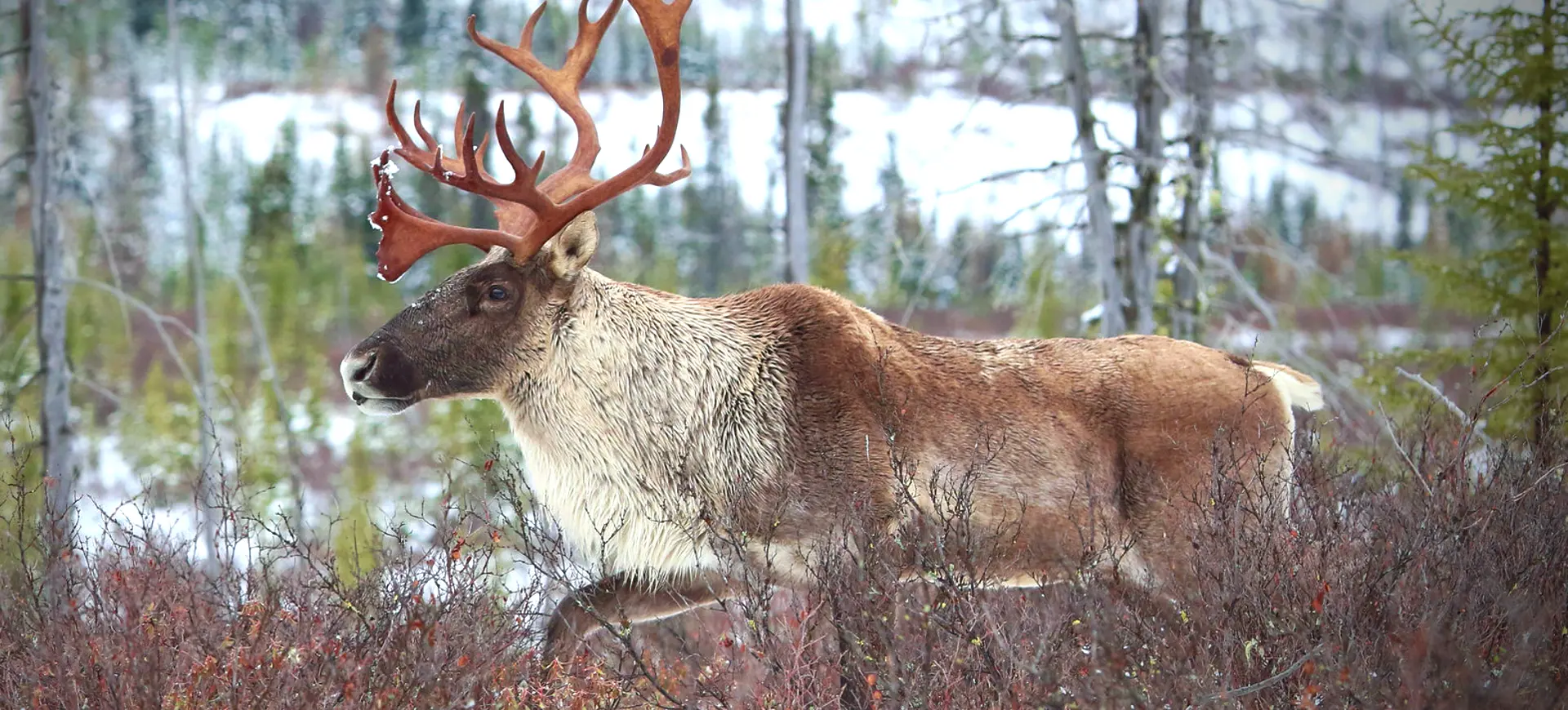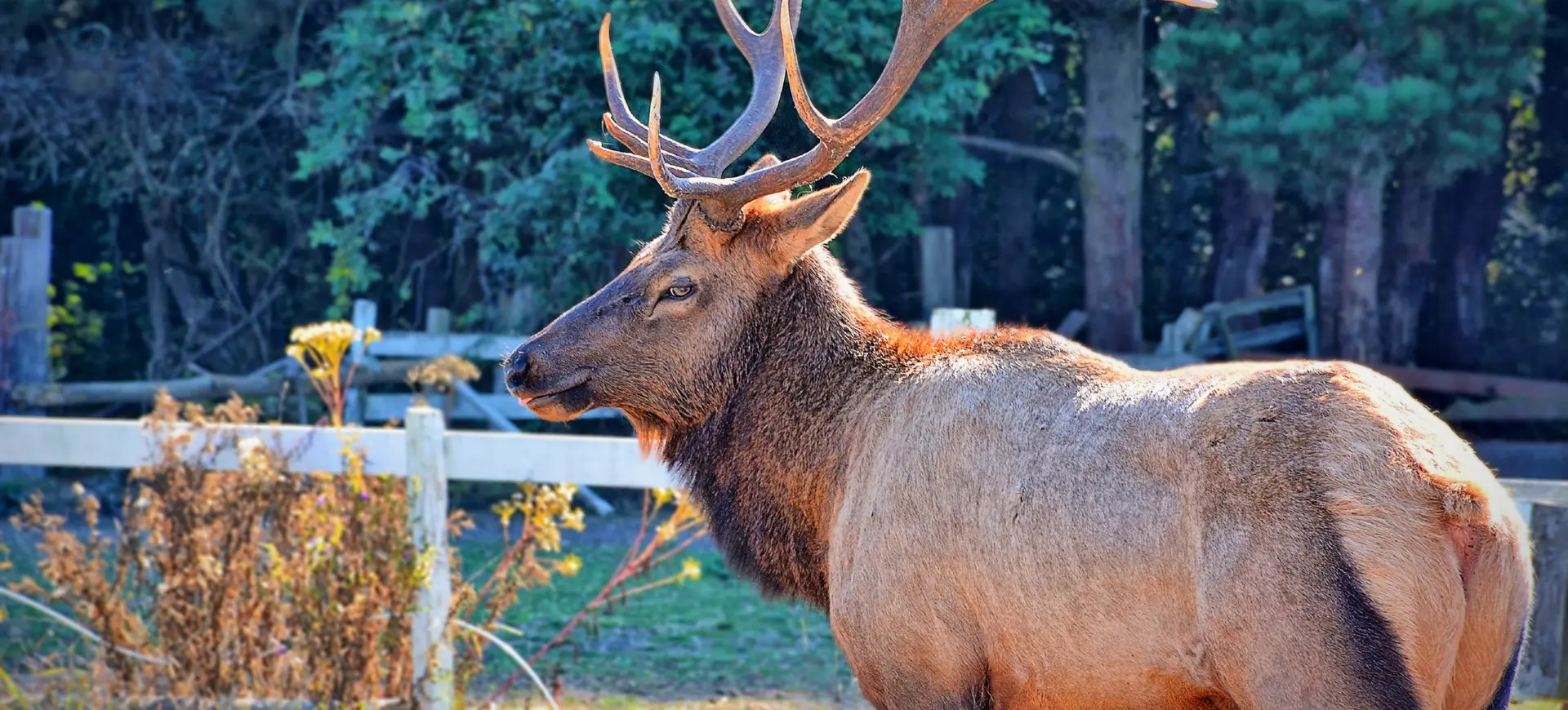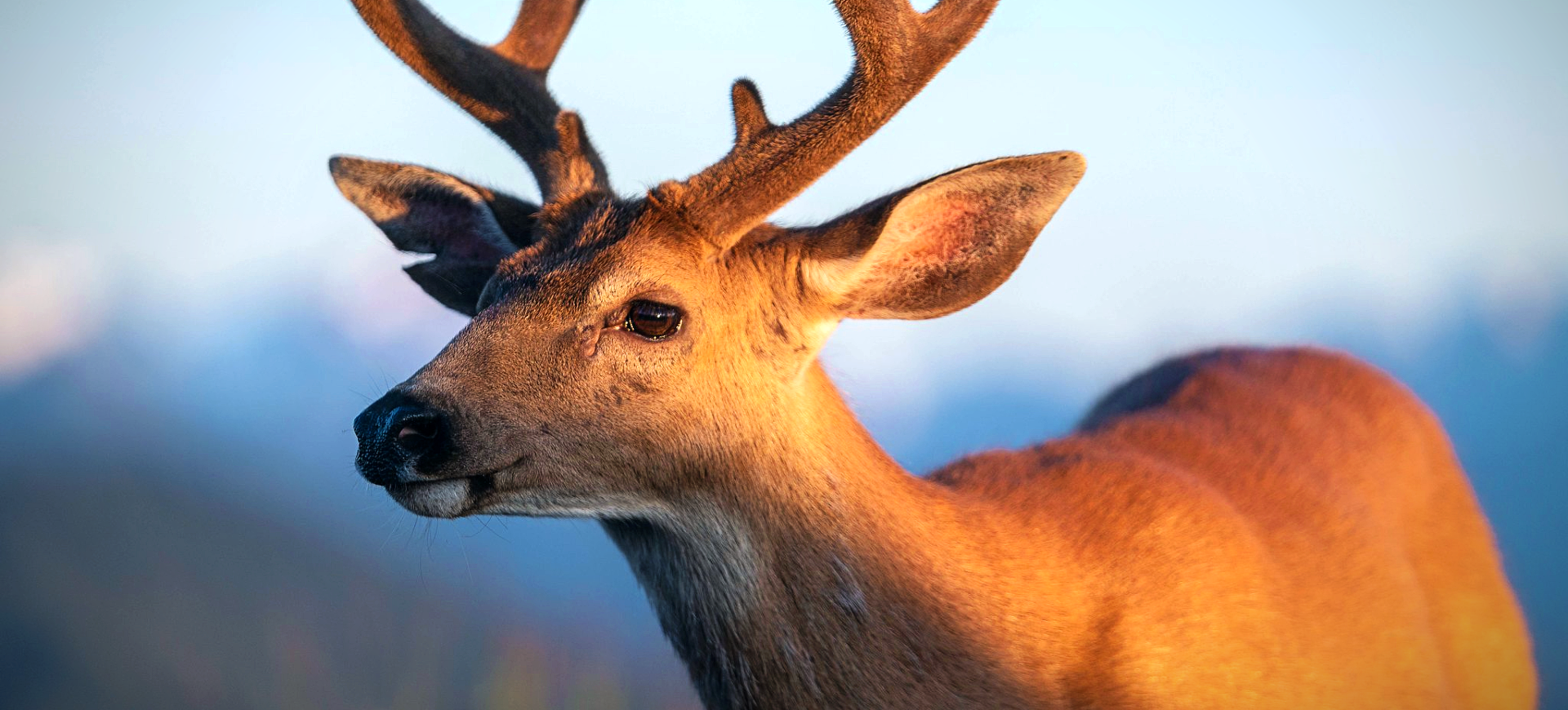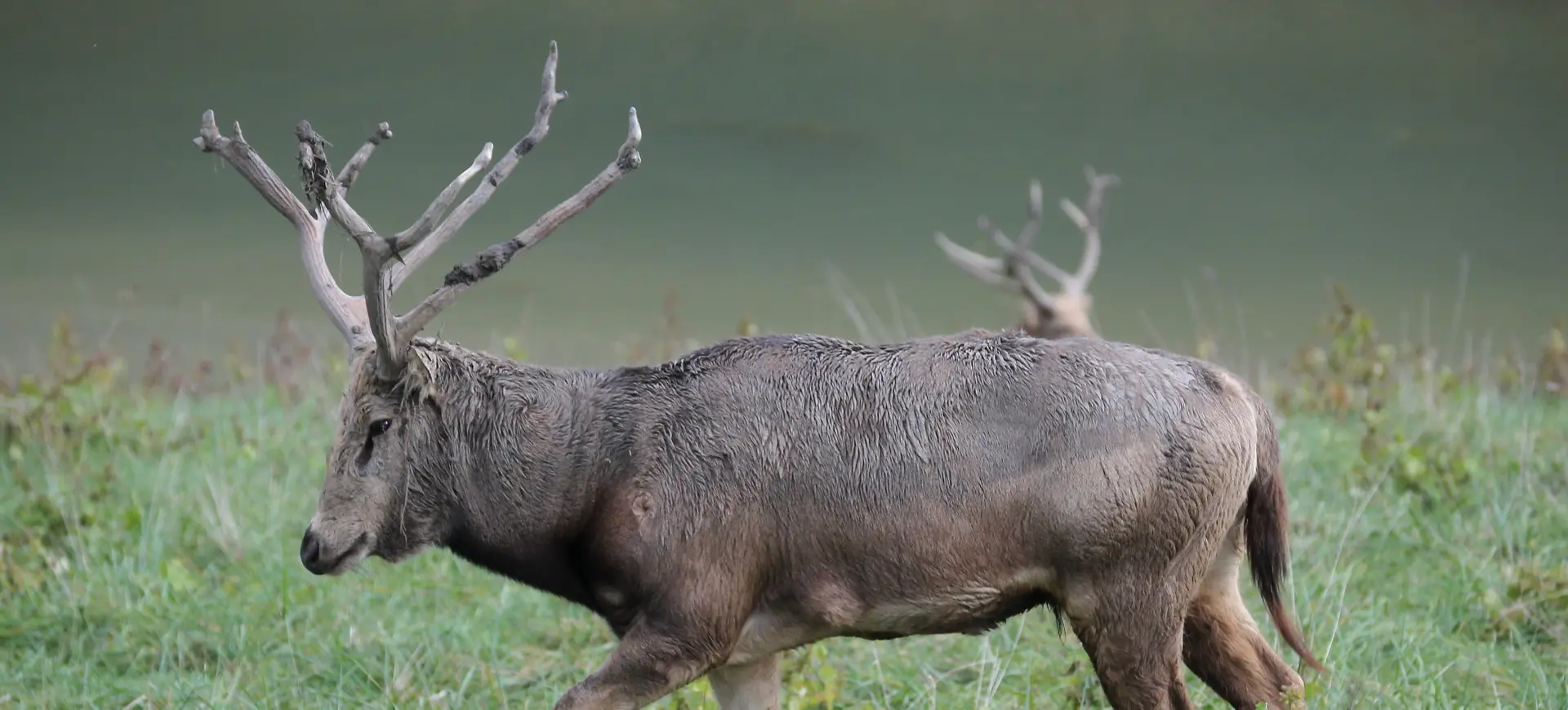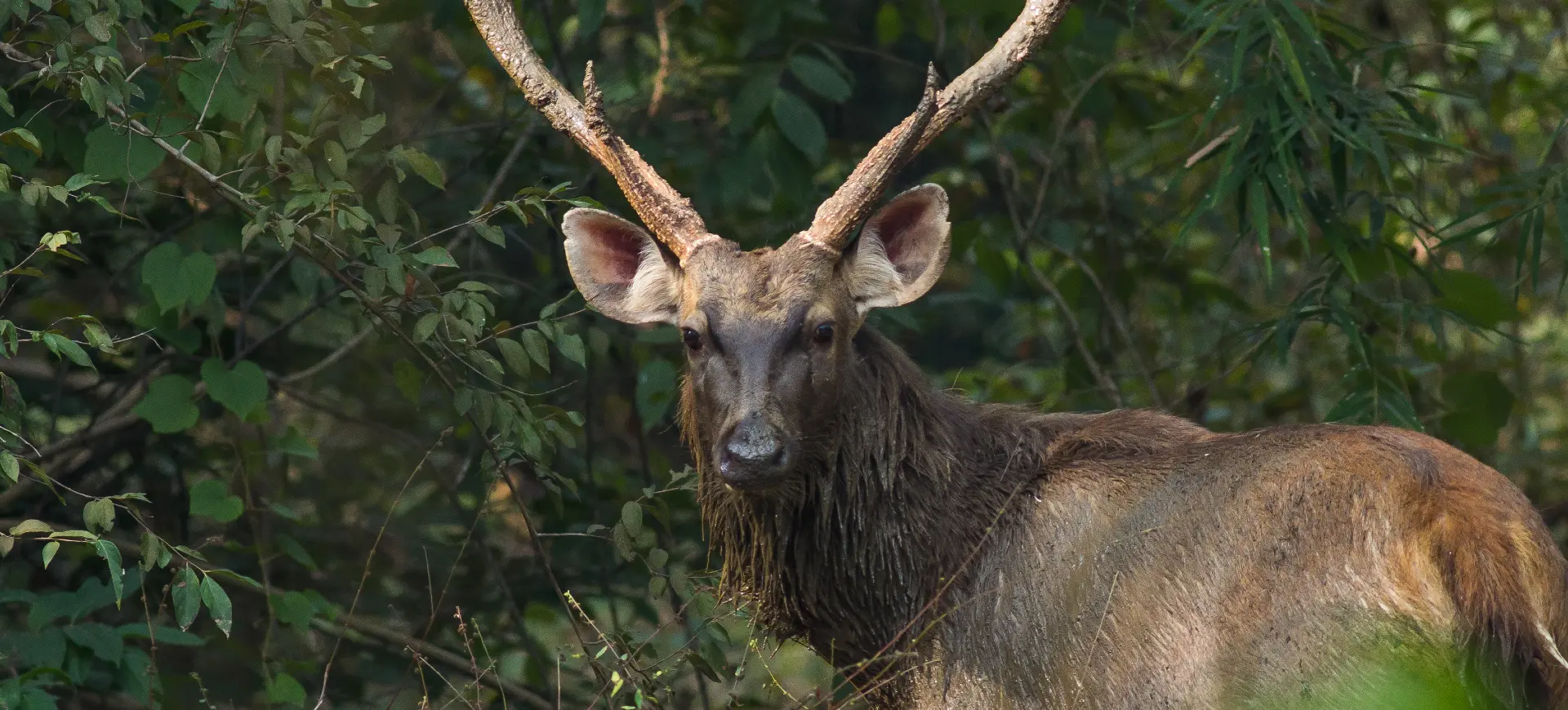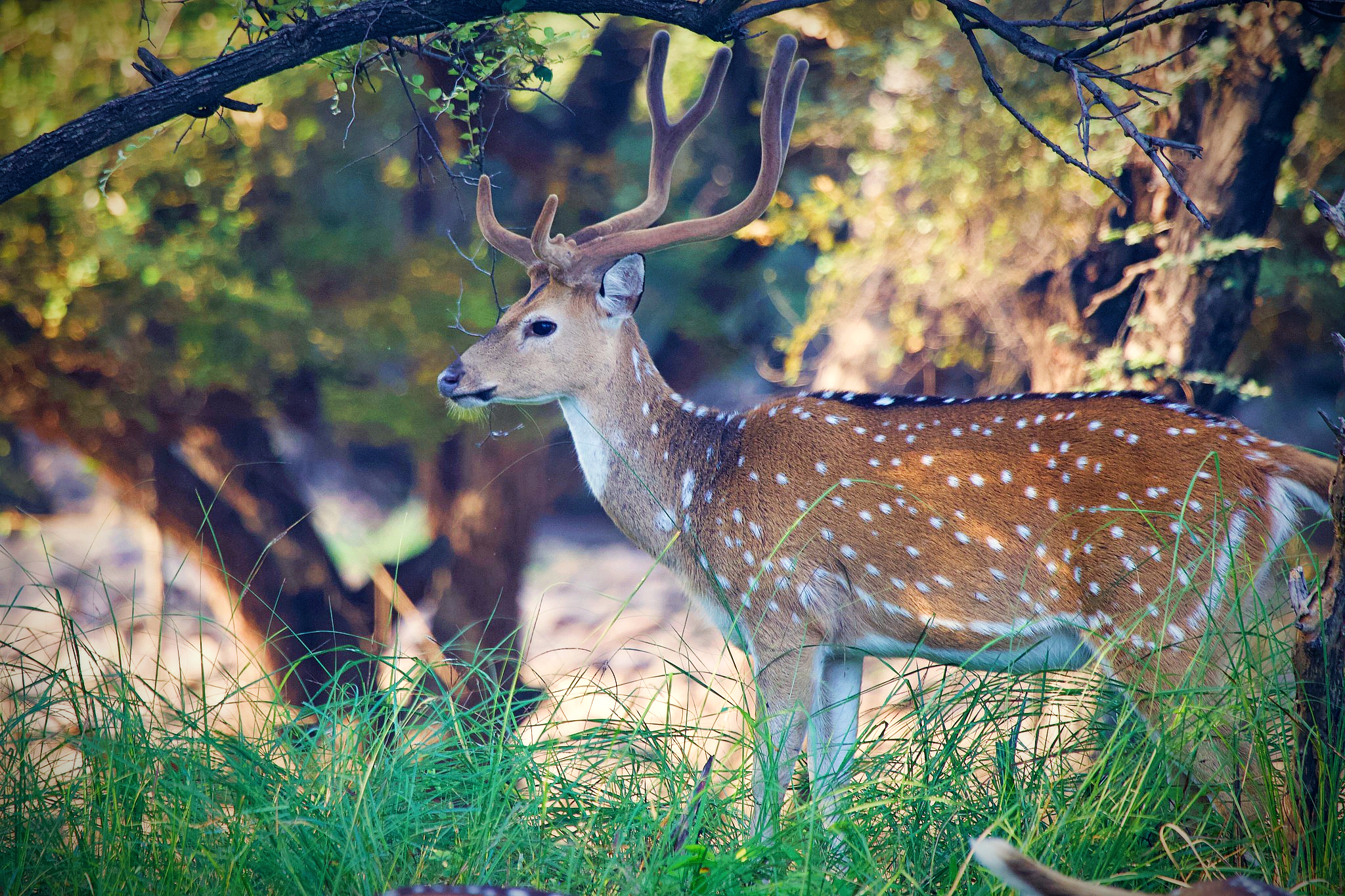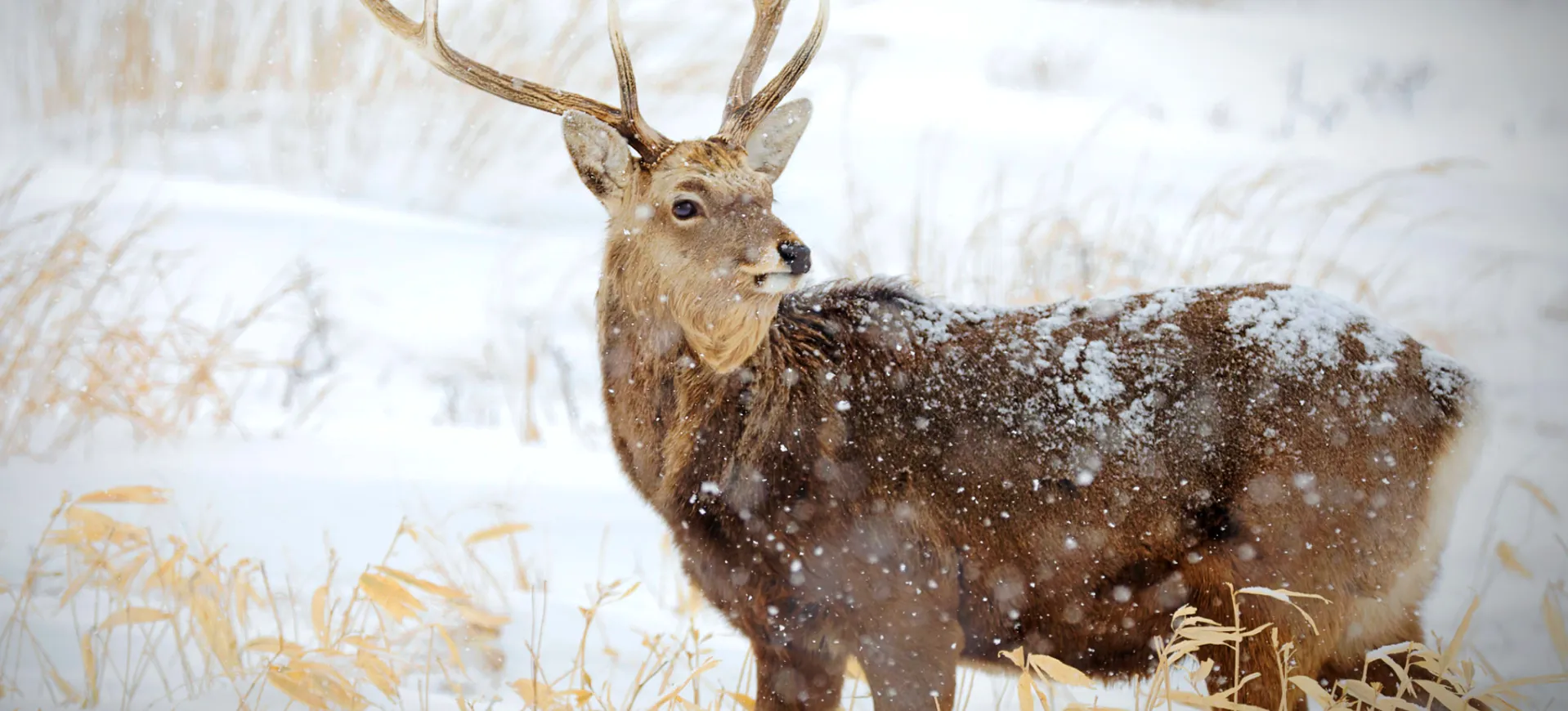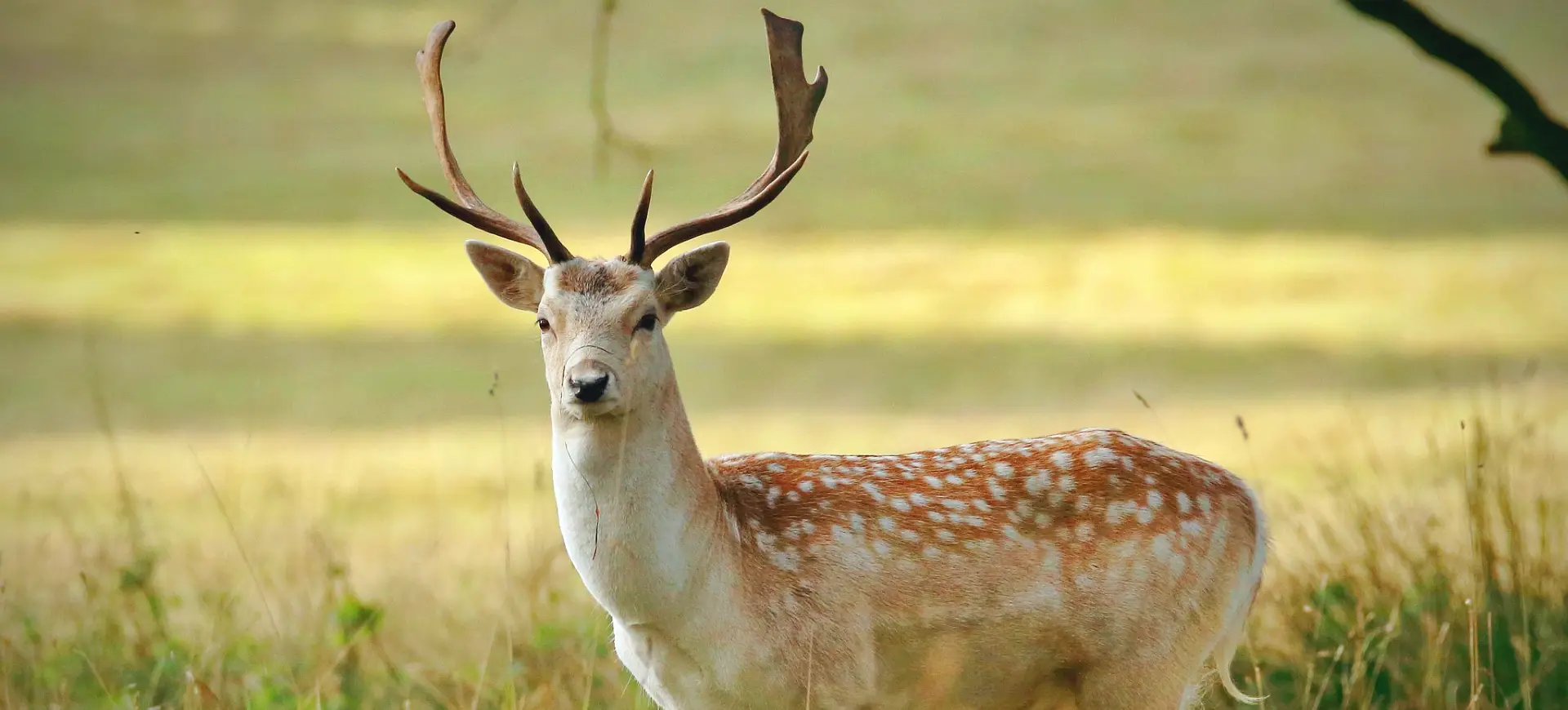Overview
The Mule Deer (Odocoileus hemionus) is a prominent species of deer native to western North America, known for its large mule-like ears from which it derives its name. Characterized by a gray-brown coat, white rump patch, and a small white tail with a black tip, mule deer are adaptable to various terrains, including dense forests and rocky mountainsides. They exhibit a distinctive bounding leap (stotting), where all four feet come together, an effective evasion technique against predators. Mule deer are crepuscular, most active at dawn and dusk when they forage for various vegetation.
The social structure of mule deer varies seasonally; in the summer, females (does) and their fawns group together, while males (bucks) form separate bachelor groups. Come autumn, during the breeding season known as the rut, bucks become more solitary or form small groups and compete for the attention of does. This competition involves displays of dominance, including antler wrestling. Post-rut, deer often congregate in mixed-sex herds to forage and migrate to winter ranges, demonstrating their complex social dynamics.
Mule deer populations have faced challenges due to habitat loss, fragmentation, predation, and human encroachment. Conservation efforts focus on habitat restoration and management to ensure sustainable populations. Mule deer’s adaptability to diverse habitats helps them cope with changing environments, but urban development and barriers like roads and fences continue to threaten their migration routes and survival.
Taxonomy
Kingdom
Phylum
Class
Order
Family
Genus
Species
Sub Species
Type
Current distribution:
Mule deer are widespread across the western part of North America. They are primarily found in the Rocky Mountain regions and the Great Basin and Pacific regions of the United States. Populations extend into southwestern Canada and down through the Baja California peninsula in Mexico.
Despite their wide range, the fragmentation of habitats caused by urban expansion and agricultural development poses significant challenges to their migration patterns and survival. Therefore, Conservation strategies focus on preserving corridor connectivity to prevent genetic isolation and support robust populations.
Physical Description:
Mule deer are medium-sized, stocky deer with a height ranging from 3 to 3.5 feet at the shoulder. Adult males, or bucks, are larger than females, with mature bucks weighing between 130 and 280 pounds and typically weighing between 95 and 200 pounds. The most distinctive feature of mule deer is their large ears, which can move independently and are almost the same length as their head. Their antlers, shed and regrown annually, are bifurcated, meaning they fork as they grow rather than branching from a single main beam as seen in white-tailed deer.
The coat of the mule deer changes color seasonally, being reddish-brown in summer and a more gray-brown in the winter, which provides better camouflage. The throat, belly, and area around the mouth and nose are white, contrasting with a black-tipped white tail that is conspicuously raised when the animal is alarmed or running. This signaling is particularly important during flight responses when visibility is key in dense vegetation or rugged terrain.

Lifespan: Wild: ~9 Years || Captivity: ~20 Years

Weight: Male: 130-280 lbs (59-127 kg) || Female: 95-200 lbs (43-91 kg)

Length: Male: 50-70 in (127-178 cm) || Female: 45-65 in (114-165 cm)

Height: Male: 40-42 in (102-107 cm) || Female: 38-40 in (97-102 cm)

Top Speed: 45 mph (72 km/h)
Characteristic:
Native Habitat:
Mule deer are native to the rugged terrains of western North America, from the coastal islands of Alaska through the western United States and down into the northern deserts of Mexico. They inhabit a wide range of ecosystems, including temperate rainforests, shrublands, mountainous areas, and arid deserts. Their adaptability to diverse environments is crucial for their survival in changing landscapes.
Regarding elevation, mule deer can be found from sea level to high mountain areas, often migrating seasonally between elevations to follow the greening of vegetation. This migration is critical to their life cycle, affecting their breeding, birthing, and survival rates. Ensuring connectivity between these seasonal ranges is essential for maintaining healthy populations.
Climate Zones:
Biogeographical Realms:
Continents:
Countries:
Diet:
Diet & Feeding Habits:
Mule deer are herbivores whose diet varies seasonally based on available vegetation. During spring and summer, their diet primarily consists of high-protein forbs and various grasses, which help in females’ growth and the lactation period. In the fall and winter, they switch to woody plants, twigs, bark, and evergreens, which are more abundant and can sustain them through the colder months when other food sources are scarce.
Mule deer are ruminants with a four-chambered stomach. This stomach allows them to ferment plant material before digesting it, effectively extracting nutrients from fibrous food sources. This digestive process is slow, enabling them to digest tougher plant material encountered in winter. They typically feed during the twilight hours of dawn and dusk, which reduces the risk of predation and allows for more efficient use of their habitat.
Mating Behavior:
Mating Description:
Mule deer breeding season, or rut, occurs in the fall, with timing varying slightly by geographical area. During this time, bucks become more aggressive as they compete for the attention of does. Dominant bucks will gather harems of females, which they defend from younger or less dominant males. Dramatic displays of strength and stamina mark this period as males engage in antler wrestling matches.
Gestation lasts approximately 190-200 days, giving birth to one to three fawns in the late spring or early summer. The fawns are born with white spots for camouflage and are hidden by their mothers in dense vegetation for the first few weeks of life. During this vulnerable period, fawns are mostly sedentary to avoid predation, relying on their lack of scent and the mother’s vigilance for protection.
Reproduction Season:
Birth Type:
Pregnancy Duration:
Female Name:
Male Name:
Baby Name:
Social Structure Description:
Mule deer exhibit a flexible social structure that varies throughout the year. They may form large herds that migrate between seasonal ranges outside the breeding season. The social order becomes hierarchical during the rut as bucks compete for breeding rights. Post-rut, deer often regroup into mixed-sex herds for the winter months.
This seasonal variation in social structure helps mule deer optimize their survival and reproductive success. Forming herds can provide safety in numbers, while solitary or small group behavior during the rut minimizes competition and maximizes reproductive opportunities.
Groups:
Conservation Status:
Population Trend:
Mule deer populations are generally stable but face regional declines due to habitat loss, predation, and disease. In some areas, they are abundant and well-adapted to human-altered landscapes, while in others, they struggle due to fragmented habitats and reduced food availability. Effective population management and conservation are critical to addressing these challenges and ensuring long-term viability.
Population management strategies include habitat conservation, controlled hunting to manage population density, and research into disease prevention and control. These measures help maintain balance within ecosystems and support sustainable numbers of mule deer across their natural range.
Population Threats:
The primary threats to mule deer populations include habitat loss and fragmentation, which interfere with their migratory routes and breeding patterns. Urban development, roads, and barriers such as fences restrict their natural movements and can lead to population isolation. Additionally, predation by natural predators like mountain lions and wolves and competition for food with other herbivores impact their survival.
Diseases such as chronic wasting disease and bovine tuberculosis also pose significant health threats to mule deer. Climate change affects the quality and availability of their food sources, particularly in more arid regions where water scarcity can lead to decreased plant growth.
Conservation Efforts:
Conservation efforts for mule deer involve habitat preservation and restoration, ensuring connectivity between their seasonal ranges, and managing human-wildlife conflicts. Organizations and government agencies work to protect critical habitats and migration corridors through land use planning and the implementation of wildlife crossings and fences designed to facilitate safe migrations.
Regulated hunting also manages populations, ensuring they remain at healthy levels that their environments can support. Public education campaigns help increase awareness about the needs and challenges of mule deer, promoting coexistence and support for conservation initiatives.
Additional Resources:
Fun Facts
- Mule deer are named for their large, mule-like ears, which can move independently to pinpoint sounds.
- Their stotting behavior is not only a means of escape but also a way to communicate danger to other deer.
- Mule deer antlers are shed each year and regrown, getting larger as the deer ages.
- They have a unique bounding gate called “stotting” that allows them to make great leaps and cover up to 15 feet in a single bound.
- Mule deer can go for long periods without water, getting moisture from the plants they eat.
- They can make sharp turns while running, which helps them evade predators.
- The fawns have no scent for the first few weeks of life, helping them avoid detection by predators.
- Mule deer have excellent night vision, aiding their crepuscular feeding habits.
- During the rut, a dominant buck can gather a harem of several dozen does.
- Mule deer migrations can cover up to 100 miles between their summer and winter habitats.

